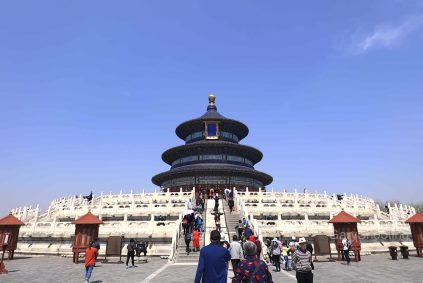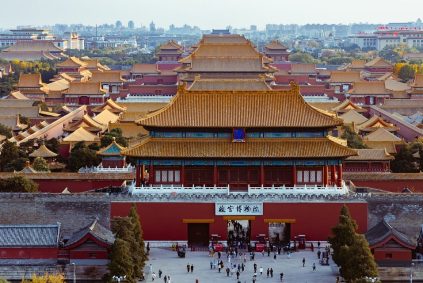The Essence of Authentic Guangzhou Wonton Noodles: Three Core Components
Bamboo-Pressed Noodles: The Foundation of Texture
Authentic Guangzhou wonton noodles rely on juk sing mein (bamboo-pressed noodles), a labor-intensive process that defines their unique elasticity. The dough is crafted solely from duck eggs and high-gluten flour, without a drop of water, then repeatedly compressed under a heavy bamboo pole for over two hours. This technique creates a silky-thin noodle with a springy, al dente bite. To preserve its texture, the noodles are cooked briefly in boiling water, rinsed under cold water to halt the cooking process, and reheated in the soup just before serving. This ensures they remain firm yet tender, avoiding the mushiness of instant alternatives.
Wonton Fillings: A Balance of Freshness and Umami
The soul of Guangzhou wontons lies in their minimalist yet precise filling. Traditional recipes use a 6:4 ratio of fresh shrimp to lean pork, ensuring a sweet, briny pop from the shrimp balanced by the savory depth of pork. The shrimp are hand-chopped to retain texture, while the pork is finely ground for a smooth contrast. A touch of egg yolk binds the mixture, and a dash of white pepper and sesame oil adds aromatic complexity. The wonton skins, pressed to paper-thin transparency, are wrapped into a “goldfish tail” shape—a nod to auspicious symbolism—by folding the edges inward to create a delicate, ruffled edge.
Broth: The Art of Clarity and Depth
The broth is a masterclass in subtlety, achieving richness without heaviness. It begins with roasted dai dai yu (dried flatfish) at ha gok (dried shrimp shells), which are simmered with pork bones for 3–5 hours to extract a deep umami base. Key techniques include:
- Skimming Impurities: Regular skimming ensures crystal-clear clarity.
- Layering Flavors: Some cooks add a pinch of ham choy (dried mustard greens) or a slice of cured ham for complexity.
- Final Straining: The broth is strained through muslin to remove solids, resulting in a golden, fragrant liquid that’s light yet intensely flavorful.
The Ritual of Serving: Presentation and Tradition
The “Five Wontons Under the Noodles” Rule
Authentic servings place five wontons at the bottom of the bowl, topped with a nest of noodles. This arrangement prevents the noodles from overcooking in the hot broth while allowing the wontons to absorb the soup’s essence. A sprinkle of chopped gau wong (chives) is added just before serving, their mild oniony note cutting through the richness.
The “Dry vs. Soup” Debate
While most versions are served in broth (soupy wonton noodles), the “dry” variation (gon lo mein) tosses the noodles in a soy-based sauce, topped with wontons and a ladle of broth on the side. This style highlights the noodles’ texture and the wontons’ filling, offering a contrast to the soup version’s harmonious blend.
The First Bite: A Cultural Experience
Eating wonton noodles is a ritual. Diners are advised to:
- Sip the Broth First: Appreciate its clarity and depth before it’s absorbed by the noodles.
- Taste the Wontons Alone: Savor the filling’s balance without distraction.
- Mix and Enjoy: Combine noodles, wontons, and broth for a final, unified flavor.
Regional Adaptations: Preserving Tradition in a Modern World
Coastal vs. Inland Variations
Coastal chefs might emphasize seafood, using dried scallops or crab roe in the broth, while inland versions lean on pork bones and dried mushrooms for earthier notes. Some modern interpretations incorporate vegetables like watercress or bok choy, though purists argue this dilutes the dish’s essence.
Health-Conscious Tweaks
To cater to dietary trends, chefs now offer:
- Low-Sodium Broths: Reducing salt while enhancing flavor with kombu (dried kelp).
- Vegetarian Alternatives: Using shiitake mushrooms and konjac noodles to mimic the original’s umami and texture.
- Gluten-Free Options: Substituting rice flour for wheat in wonton skins, though achieving the same translucency remains challenging.
Street Food vs. Fine Dining
From humble street stalls to Michelin-starred restaurants, the dish adapts to its setting. Street vendors focus on speed, using pre-made wontons and simplified broths, while high-end establishments might age their broth for days or use rare ingredients like abalone. Yet, the core principles—texture, balance, and clarity—remain non-negotiable.
Guangzhou wonton noodles are more than a dish; they’re a culinary philosophy that celebrates simplicity, precision, and tradition. Whether enjoyed in a bustling dai pai dong (open-air food stall) or a tucked-away family eatery, each bowl tells a story of generations honing their craft to perfection.
















